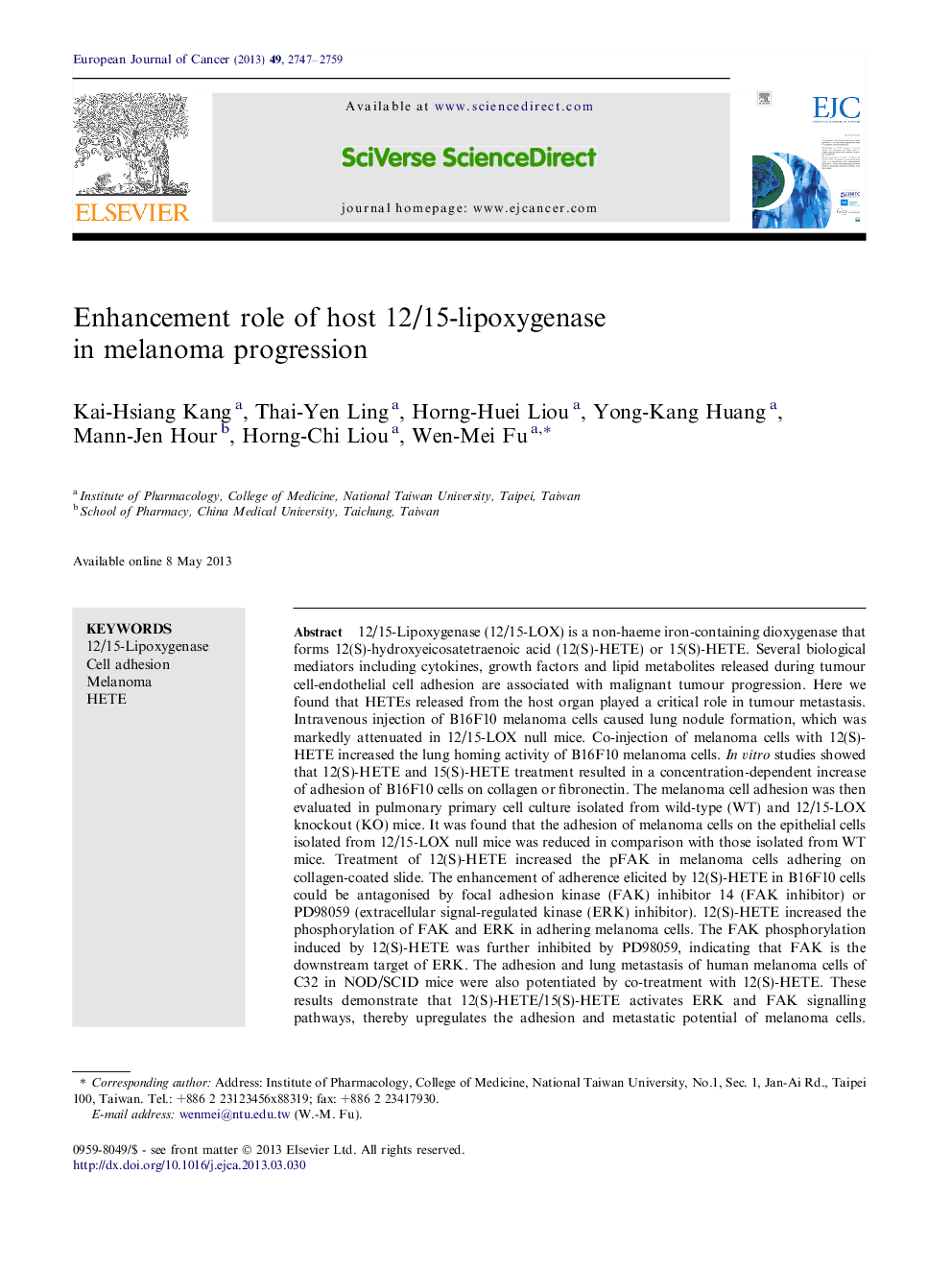| Article ID | Journal | Published Year | Pages | File Type |
|---|---|---|---|---|
| 8444227 | European Journal of Cancer | 2013 | 13 Pages |
Abstract
12/15-Lipoxygenase (12/15-LOX) is a non-haeme iron-containing dioxygenase that forms 12(S)-hydroxyeicosatetraenoic acid (12(S)-HETE) or 15(S)-HETE. Several biological mediators including cytokines, growth factors and lipid metabolites released during tumour cell-endothelial cell adhesion are associated with malignant tumour progression. Here we found that HETEs released from the host organ played a critical role in tumour metastasis. Intravenous injection of B16F10 melanoma cells caused lung nodule formation, which was markedly attenuated in 12/15-LOX null mice. Co-injection of melanoma cells with 12(S)-HETE increased the lung homing activity of B16F10 melanoma cells. In vitro studies showed that 12(S)-HETE and 15(S)-HETE treatment resulted in a concentration-dependent increase of adhesion of B16F10 cells on collagen or fibronectin. The melanoma cell adhesion was then evaluated in pulmonary primary cell culture isolated from wild-type (WT) and 12/15-LOX knockout (KO) mice. It was found that the adhesion of melanoma cells on the epithelial cells isolated from 12/15-LOX null mice was reduced in comparison with those isolated from WT mice. Treatment of 12(S)-HETE increased the pFAK in melanoma cells adhering on collagen-coated slide. The enhancement of adherence elicited by 12(S)-HETE in B16F10 cells could be antagonised by focal adhesion kinase (FAK) inhibitor 14 (FAK inhibitor) or PD98059 (extracellular signal-regulated kinase (ERK) inhibitor). 12(S)-HETE increased the phosphorylation of FAK and ERK in adhering melanoma cells. The FAK phosphorylation induced by 12(S)-HETE was further inhibited by PD98059, indicating that FAK is the downstream target of ERK. The adhesion and lung metastasis of human melanoma cells of C32 in NOD/SCID mice were also potentiated by co-treatment with 12(S)-HETE. These results demonstrate that 12(S)-HETE/15(S)-HETE activates ERK and FAK signalling pathways, thereby upregulates the adhesion and metastatic potential of melanoma cells. The endogenous release of 12(S)-HETE/15(S)-HETE in the host organ may affect the metastatic potential of melanoma.
Related Topics
Life Sciences
Biochemistry, Genetics and Molecular Biology
Cancer Research
Authors
Kai-Hsiang Kang, Thai-Yen Ling, Horng-Huei Liou, Yong-Kang Huang, Mann-Jen Hour, Horng-Chi Liou, Wen-Mei Fu,
